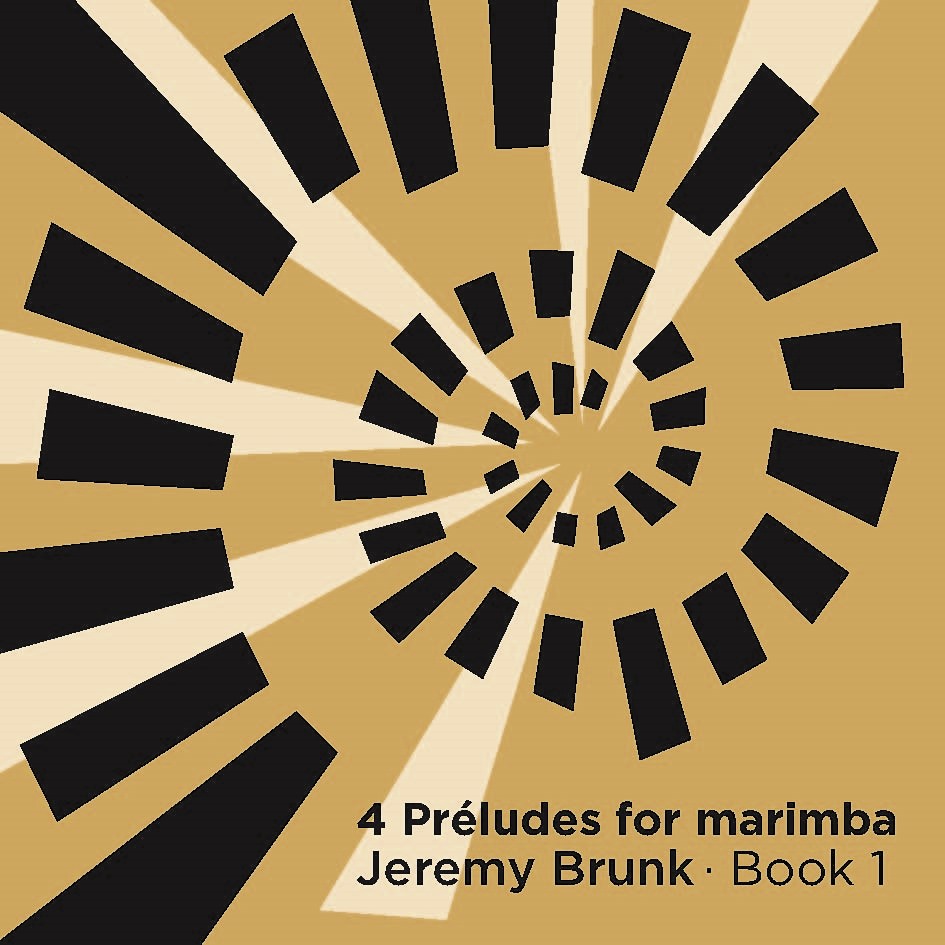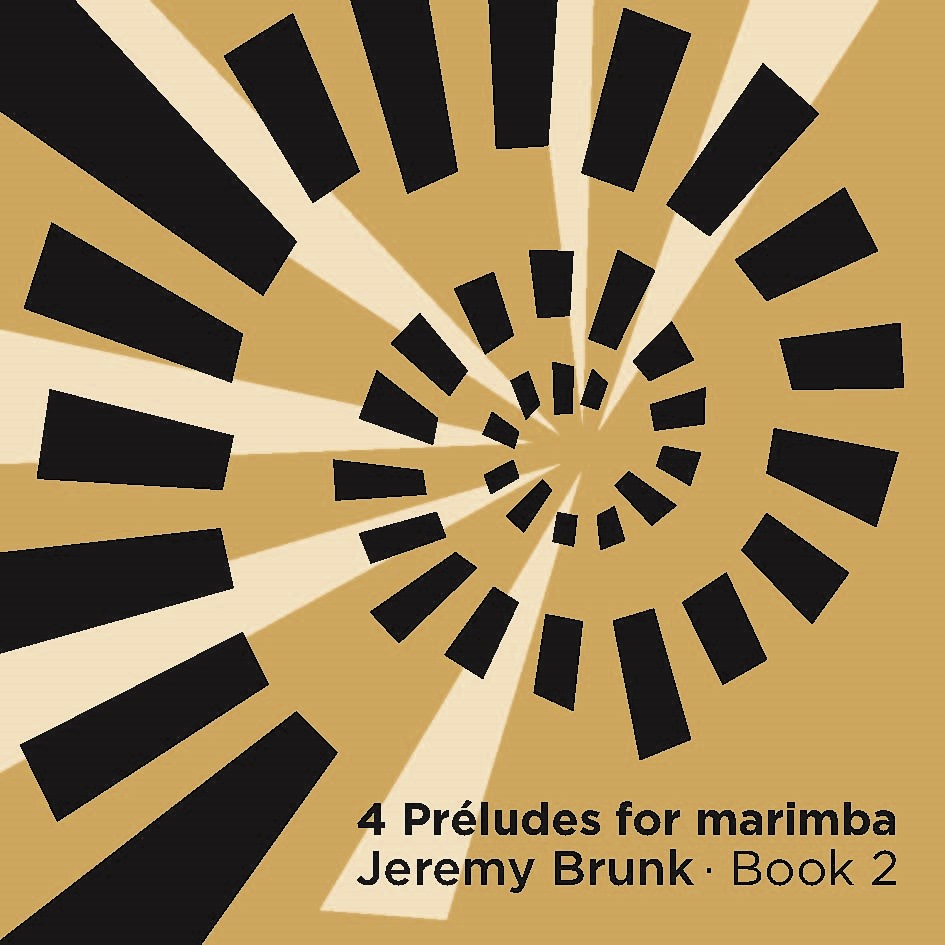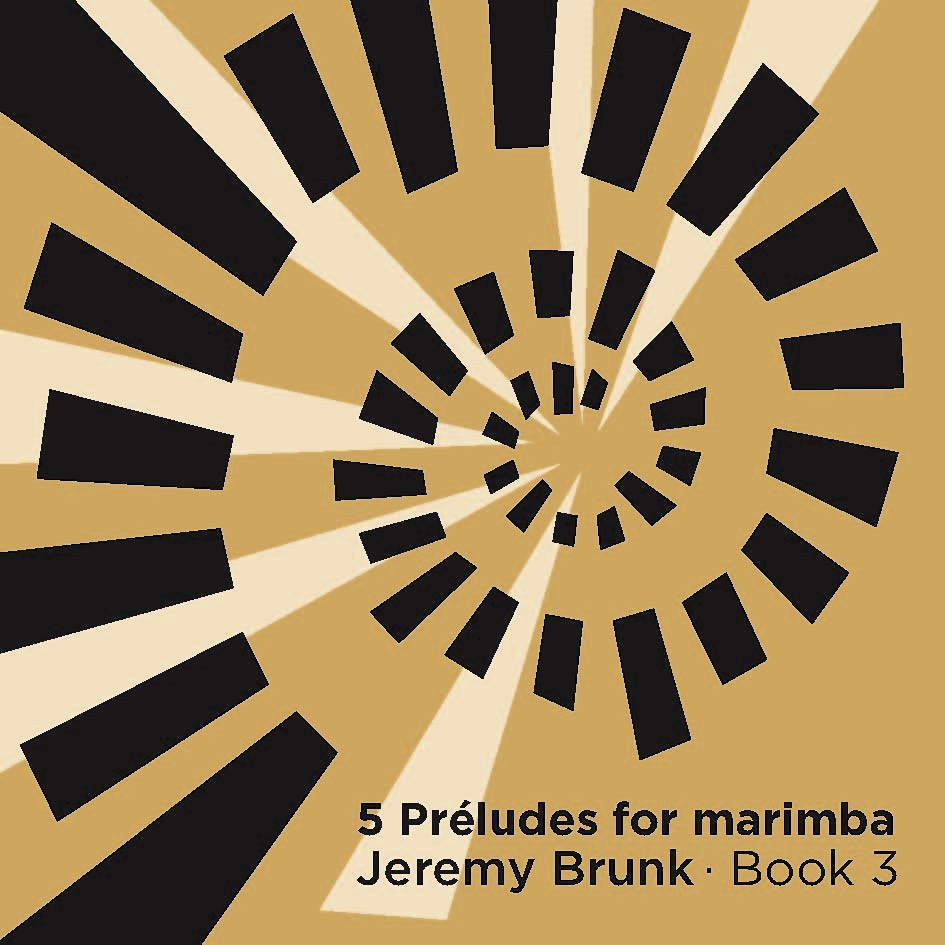
4 Préludes - Book No. 1
Composer: Jeremy Brunk
Instrument: Marimba
Level: unknown
Published: 2012
Price: €20.00
Item details
-
Description +
-
Duration: 15 min.
This first set of Préludes is written to develop both technique and musicianship for a beginning level 4-mallet marimba student. Each piece is progressively more difficult and should be learned in order for maximum effect. Your goals should be to maintain a relaxed 4-mallet grip, gain hand independence, refine combinations of stroke types, and establish consistent interval spans from 3rds to 6ths. These pieces should also help you to visualize diatonic scale patterns and simple harmonic progressions on the keyboard.
no. 1 [...and found] Keep a steady tempo throughout, especially in rolled phrases. Make sure to count the syncopated rhythms correctly and observe all changes in dynamics.
no. 2 [...dynamic oscillations] Study this form very carefully, observe the repeat in m. 12 the first time only, and follow the first and second endings for each repeat at Buoyant. No rolls at mm. 5-12, practice using arm weight for a full, legato tone.
no. 3 [...static inertia] Roll speed here should be irregular and no faster than necessary to achieve continuous resonance. Maintain the feeling of long phrases through the ostinato section. Measures 89-140 should continue the alternating 16ths texture as before.
no. 4 [...dies irae] Your day of judgment, a culmination of all techniques for the beginning marimba student. Be precise with the syncopated rhythms, and try to bring out the Dies Irae melody in each phrase. Each book of Préludes can be performed together as a multi-movement set, but individual works may also be played separately, or in combination with other pieces in the entire collection.
-
-
Instrumentation +
-
Marimba (5-octave)
-
-
About the composer +
-
Dr. Jeremy Brunk serves as Lecturer of Music at Millikin University,where he teaches applied percussion, percussion methods, music theory, ear training and assists with the percussion ensembles. Outside of Millikin, he has given solo recitals and masterclasses in marimba and timpani across central and northern Illinois, including past events for PAS and IMEA. Most recently, his composition Dominican Cycles was performed at 2008 PASIC by the Millikin Percussion Ensemble, and he gave solo marimba recitals at Millikin and Northern Illinois Universities last Spring. Dr. Brunk currently serves as Principal Timpanist for the Millikin-Decatur Symphony, Section Percussionist with the Illinois Symphony, and acting Principal Timpanist with the Peoria Symphony this season; appearing previously with Sinfonia da Camera, Champaign-Urbana Symphony, Oklahoma City Philharmonic and North Carolina School of the Arts Summer Festival Orchestra. He is also co-founding member of Melange Chamber Players of Chicago and works each summer as a dance accompanist at Interlochen Center for the Arts. In 2007, Jeremy Brunk completed his D.M.A.in Percussion Performance and Literature at the University of Illinois at Urbana-Champaign; and holds an M.M from the University of Oklahoma and B.M. from Millikin University.
-
-
Reviews +
-
Review (Percussive Notes, July 2014)
In this collection of four preludes, Jeremy Brunk has not only provided valuable literature for beginning to intermediate four-mallet students, but also composed a set of beautifully mature and accessible works for all marimbists. While some of the more sophisticated elements of these selections make this collection less accessible for younger students, the musicality required and the fairly substantial length of each prelude make any one or the entire set very appropriate for college or university recitals and ideal for more mature musicians making their first steps into four-mallet literature.
Each of Brunk’s preludes is two to four pages in length and approximately four to five minutes in length. A variety of stroke types, sticking permutations, and time signatures are utilized, but nothing that would be considered advanced four-mallet technique. Intervals between hands and between mallets maintain a comfortable spacing, and the cumulative range of any one piece rarely exceeds three octaves. Consistencies in Brunk’s compositional style can be seen throughout the collection, but each prelude exhibits a unique stylistic voice. The collection requires a 4.5-octave or larger instrument, but the first three preludes are playable on a low-A marimba.
In a recent conversation, a colleague of mine lamented the apparent lack of musically mature but technically accessible new literature for keyboard percussion solo. As if in response, these “4 Preludes for Marimba” will likely find their next home on my music stand rather than my file drawer, and I believe others will quickly find many opportunities to program these beautiful, albeit beginning, four-mallet works.
—Josh Gottry
-
-
Credits +
-
Front cover: Sune Kliborg Lynge (Kliborg Design)
Engraving: Jeremy Brunk & Johan Svitzer
Printed in Copenhagen, Denmark
Copyright © Edition SVITZER
www.editionsvitzer.com
-


